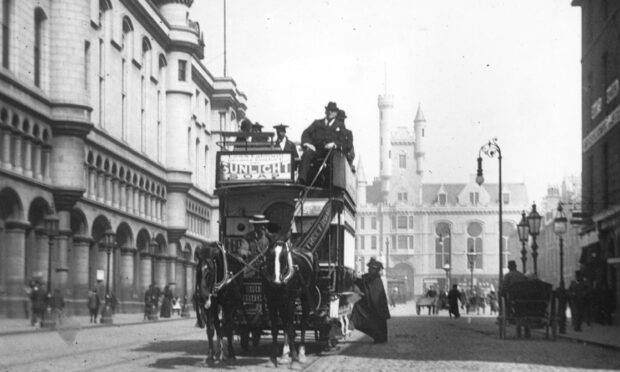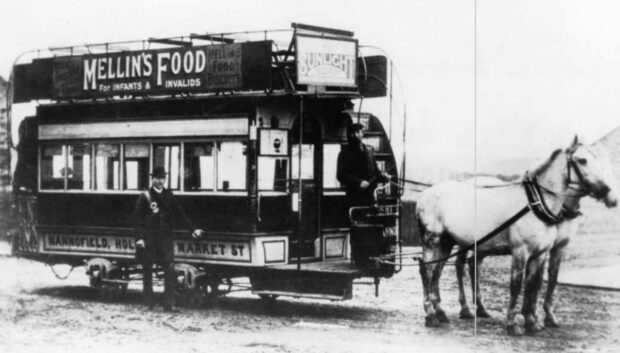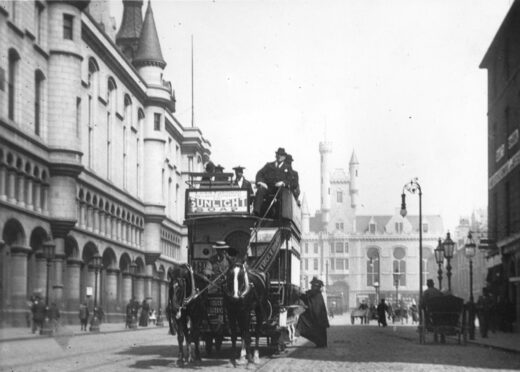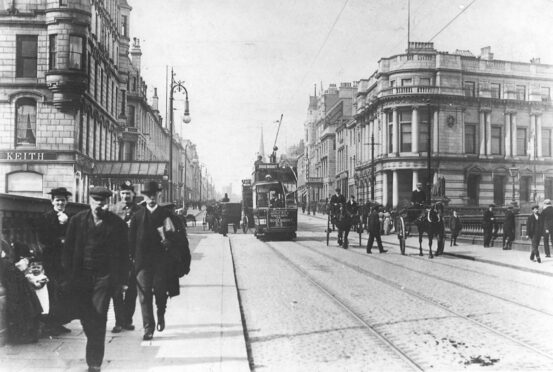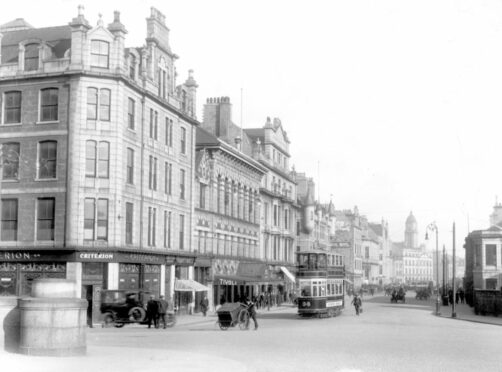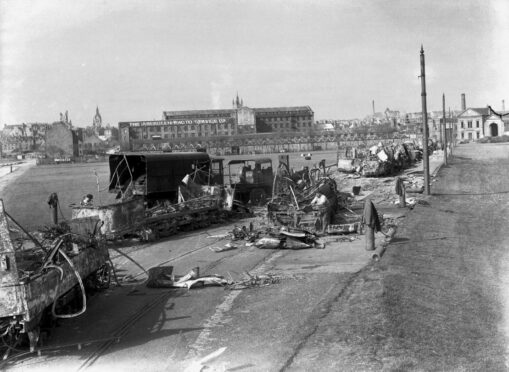There has been much speculation recently on what a modern-day tram network could look like in Aberdeen.
The very notion of tramways on the streets of Aberdeen today seems almost as revolutionary – and perhaps fanciful – as it did back in 1874.
Aberdonians at the time were reported to be “unfriendly” towards the prospect of trams in the Granite City and dismissed them as “a Yankee invention”.
Typically suspicious and dour, few city folk had ever seen a tram and didn’t believe enough people would use them to cover the costs of installing them, in fact they asked: “What is the use of trams?”
But despite the general reluctance, city businessmen pressed on regardless, and trams were first approved for Aberdeen in 1872.
However, a labour and iron shortage meant work couldn’t begin until April 1874.
Construction of network
It took just four months from the breaking of the ground to the opening of the network on August 31 1874 to construct Aberdeen’s horse-drawn tramway.
Initially, the total length of the line constructed was three miles for running six tramcars, pulled by a fleet of 24 horses.
The first route took passengers from Queen’s Cross, where the tram depot was, to Kittybrewster via Union Street and St Nicholas Street.
And the second, from Queen’s Cross to the North Church (the modern day Arts Centre) on King Street via Union Street and Castle Street.
The line was described as being “extremely smooth”; a feature “peculiar” to the Aberdeen tramway, due to the innovative way in which the sleepers were laid.
The trams ran every 15 minutes from 8am to 10pm, and the fare from Queen’s Cross to Kittybrewster was a mere three pence.
At a cost of just £18,000 for the whole network, six tramcars, 24 horses, stables big enough to house 36 horses, harnesses and the depot, the tramway was considered a financial triumph.
Transport to benefit all
The opening ceremony was an opportunity for the businessmen to prove Aberdonians wrong.
Aberdeen Tramways secretary Mr McKinnon said: “Now that you have got tramways – what is the use of them?
“To the man of business, to whom time is money, their use is evident.
“Besides saving time to him, they give him facilities for accomplishing business engagements at places considered remote from each other, and they return him to his counting house or office, free from the heat, cold, or wet of a variable climate.
“To ladies and children and others they afford an exit from town to country, where they can inhale health from pure air and clear skies.
“Look what a convenience they offer ladies shopping and to servants going to market.
“To workmen going to and from their work, or to and from their meals.
“In short, there is no class or party to whom they are not beneficial.”
The triumph to the torching of trams
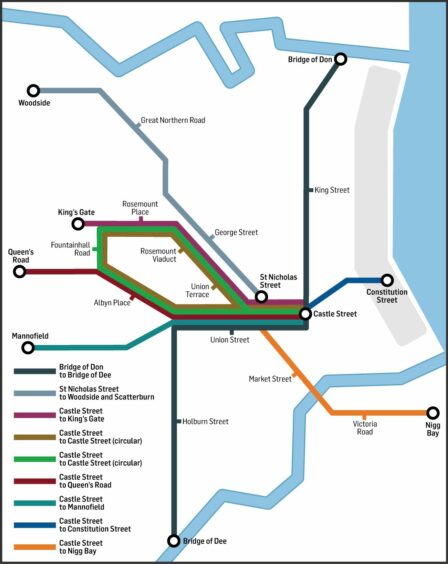
This simplified version of the Aberdeen tram network reimagined in the style of the London Underground route diagram shows the true extent of how the trams connected Aberdeen and its suburbs.
Aberdonians were indeed proved wrong. Predictions that the rails would be lifted within two years were unfounded, and in 1880, the tramway system was extended.
Firstly to the new housing development at Mannofield, then the route on King Street was lengthened and a connection was made to Woodside.
A tramway through Rosemount was made possible in 1883 after the construction of the Rosemount Viaduct and in 1884, extensions were completed to Bridge of Dee and Bridge of Don.
Affluent Aberdonians had long since vacated the stour of the city centre and its growing industries, instead settling in large villas on the outskirts.
The wealthy made good use of the tram network, but despite claims the tramway would be classless, often the only working class people on board were the driver and crew.
It was only when the town council took ownership of the network in 1898, becoming Aberdeen Corporation Tramways, that it became a more universal mode of transport bridging social classes.
Under the city council the trams became electrified early in the new century and extensions were made to Ferryhill and Torry.
The final major extension to the network was made in 1924 after a revamp of the whole system, when the line was taken to Hazlehead.
Aberdeen’s trams were famously torched in 1958 when their usage became usurped by the rise in family motor cars and buses.
Despite the initial reluctance in Aberdeen over the introduction of trams in the first place, many Aberdonians were up in arms over their destruction, although others felt they had had their day.
And now, 63 years later, it would seem the prospect of trams on the city’s streets has once again divided opinion.
If you enjoyed this, you might like:
